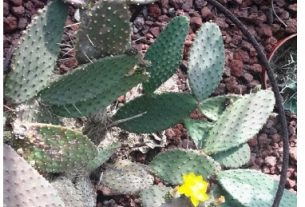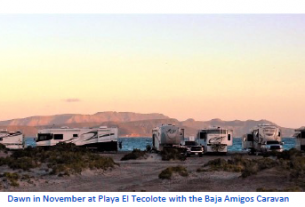By Suzanne Marshall on the March 2020 Edition
Puebla, Teotichuacán, Mexico City
Having visited Mexico City last year, we found that ten days simply didn’t do it justice. This city of eight million people in the metropolitan core is resplendent with architecture, memorials, museums, parks and pretty much any adventure you might be looking for. So, we wanted to go back and do more! But, this time, to ensure we met some priorities missed the last time; we flew from Manzanillo to Mexico City and immediately boarded a bus to Puebla which took about two and a half additional hours. It was convenient to do so as the bus left directly from the airport.
After our stay for 3 days in Puebla, we would return to Mexico City, see more sites on our list, and arrange for a tour of the ancient pyramids: The Pyramid of the Sun, the Pyramid of the Moon and the Avenue of the Dead. All these plans culminated in a fantastic adventure and a tremendously hectic schedule since we would depart Mexico City in another five days. We could easily return again as this stimulating place offers over 150 world class museums.
In Puebla, we stayed in a beautiful spot called La Casona de la China Poblana, a 17th century building which, at some time, was the original house of the China Poblana. It is now converted into a gorgeous 10-suite, boutique hotel, right on the older historic central square.
These suites are all unique and filled with pieces of antique furniture complete with hardwood tongue-and-groove floors, open air courtyard for dining and large lounging areas outside the rooms, complete with sofas and bookcases to relax with and enjoy.
In this original house, prior to renovation and restoration; lived and died Doña Catarina de San Juan, who was known as La China Poblana. In its broadest and most common sense, it is the name of what is considered to be the typical costume of the women of the state of Puebla.
It was easy to enjoy the neighbourhood complete with shops and various restaurants which offered international cuisine and, of course, entertainment, scattered about the various locations.
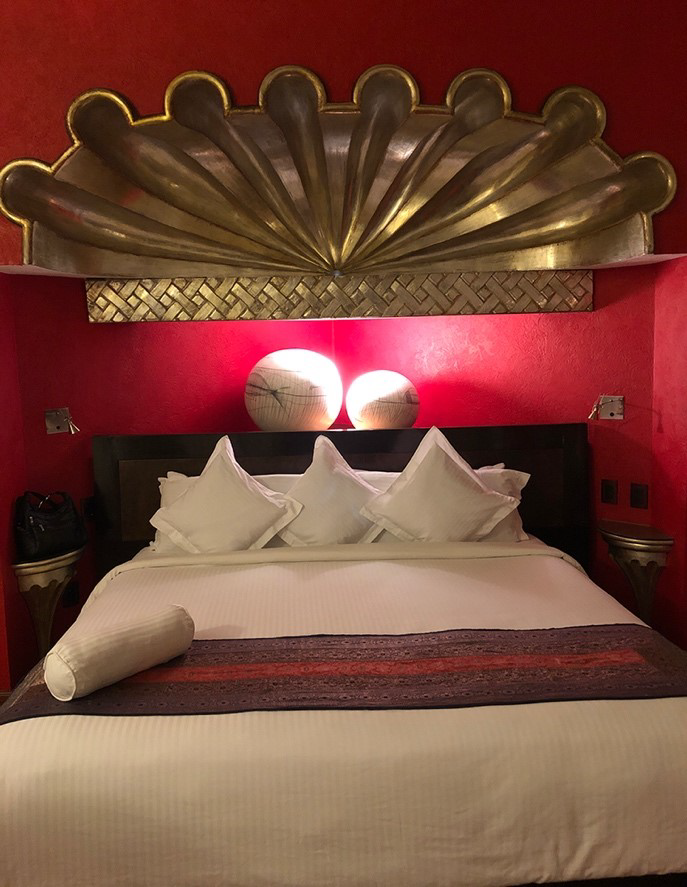
Once we’d done our ‘walk-about’, and enjoyed the local flavours, we boarded our favourite choice for touring, the ‘Turibus’, and found our seats on the open-air upper level of the bus. What a wonderful way to see a city and all the most stunning sites. Puebla is known for its beauty and culture. I wouldn’t deny them that. Our Turibus was also staffed with an English-speaking guide who knew her subjects well. These bus-es made regular stops for pick-up right on the square, usually every thirty minutes.
This tour took us through Puebla and on to Cholula and other destinations further afield. We saw and explored some magnificent ancient cathedrals and a couple that displayed the most resplendent interiors we have ever seen thus far. Puebla is very near two volcanoes, Popocatepetl and Iztaccihuatl which loomed in the distance while touring Cholula. Of course, the area is filled with various ‘tiendas’ (stores) selling gorgeous obsidian carvings, jewelry and ornaments. Naturally, we had to pick up a couple of souvenirs.
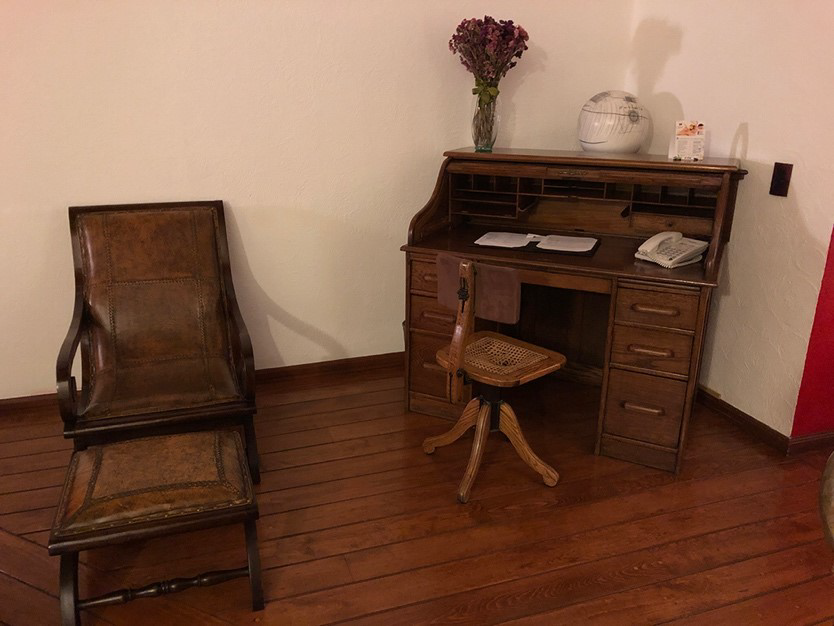
Over and above the central square ‘walkabouts’ and our tour to Cholula and areas, we also hopped a couple more Turibus destinations to ‘La Estrella’, a giant wheel with gondola cars that slowly make a circuit up and around where one can view the city from a height that broadens the vista considerably. We went at night to see the city lights and the Estrella wheel was also completely lit like a giant Ferris wheel. So much fun!
Our next Puebla adventure was the Teleférico (cable cars). The location is high on a hill in Puebla where a short gondola ride is offered with more stunning vistas. As interesting for us were the other amenities offered such as a planetarium-type museum, where a well-versed young science student shared his knowledge about a few interesting items. We also enjoyed the planetary theatre which ran a movie on the ceiling depicting the stars, moons and planets that are part of our universe. This was a very enjoyable afternoon as we boarded the Turibus that had returned to take us back to central Puebla.
It is said that several million people attend this annual celebration on Dec. 12th. So, for a nominal number of pesos, we hired an Uber taxi who drove us directly to our next hotel, Grand Fiesta Americana Chapultepec. That way we avoided the airport stop and then another taxi to the hotel, which ultimately saved us several hours of time. The hotel is in an area in Mexico City very near Chapultepec Park. We have become familiar with this area and feel safe enough to walk around and enjoy the local cuisine that we had visited on our last trip.
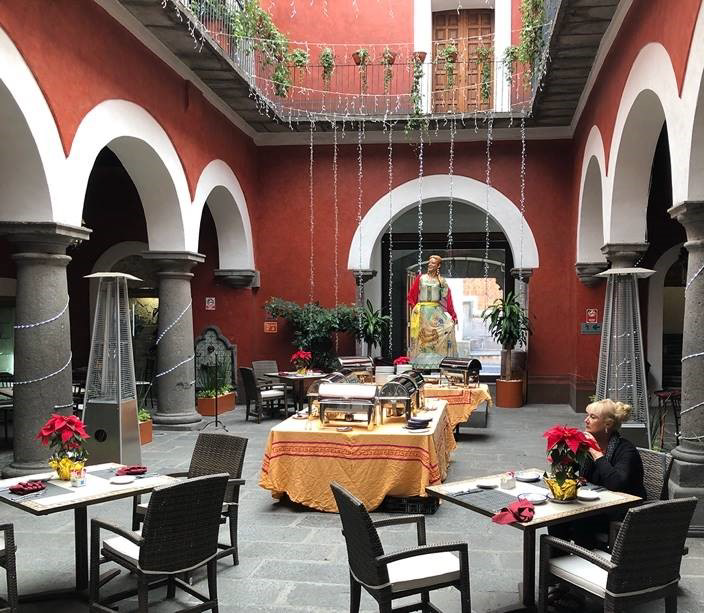
Once settled in, we headed to our favourite Szechuan restaurant down the street and made plans for our tour of the pyramids. Later, we were able to hire a very reasonable and reputable driver, Antonio, who was recommended by the hotel concierge. He turned out to be a knowledgeable and efficient guide and, the next day, we arrived at the site of the pyramids at Teotihuacán in less than an hour.
We were most impressed by the entire glorious setting and the spectacular visage of these pyramids which date back to before A.D.300. This was before the arrival of the Nahuatl speaking Azecs who descended upon the abandoned site and gave it its name, Teotihuacán. No one has been able to determine exactly who were the original architects and builders. The site covers a total surface area of 32 square miles and was supported by a population of one hundred to two-hundred thousand, according to archaeologist George Cowgill of the Arizona State University, a National Geographic Society grantee (and our guide Antonio).
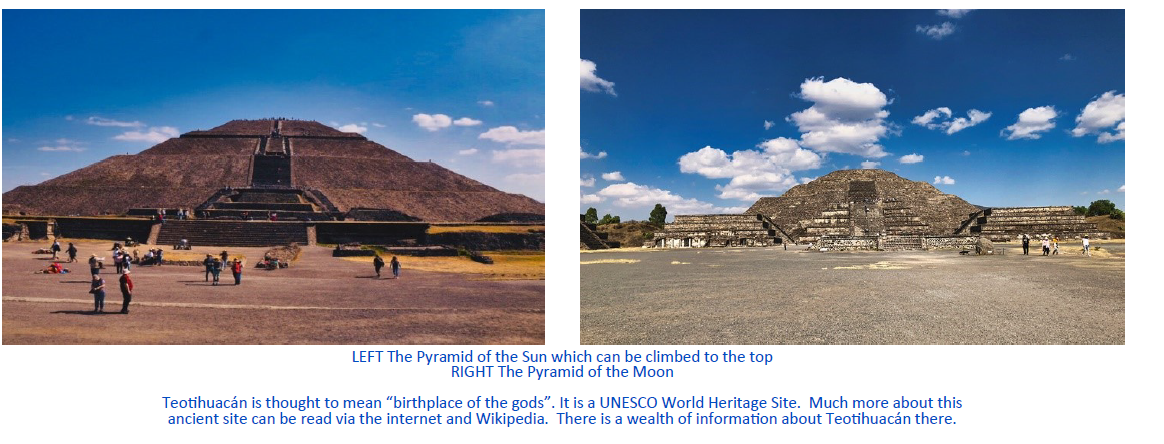
The Pyramid of the Sun and the Pyramid of the Moon rise to the skies along the Avenue of the Dead, which is about two and a half miles long. Our guide informed us that originally it was thought that the smaller structures along the Avenue of the Dead were burial crypts, but eventual exploration revealed them to be housing units which had additional wooden structures atop the buildings that now no longer exist. That would make sense to me when one considers the number of past residents. Inside the rooms within these structures are ancient wall paintings and artifacts.
Teotihuacán was the largest city anywhere in the Western Hemisphere before the 1400s and had thousands of residential compounds and scores of pyramid temples, comparable to the largest pyramids of Egypt. Teotihuacán is thought to have been deserted and the wooden structures burned, due to a famine which interrupted the supply of food and water and forced its’ residents to seek other locations for their survival.
On our way back to the parking areas, we stopped to see a very unique restaurant located in an underground cave. Tables and chairs could be seen below with staff busy serving patrons. Unfortunately, we had run out of time to give it a try! It is the most visited archaeological site in Mexico receiving more than four million visitors in 2017.
The term Teotihuacán is thought to mean “birthplace of the gods”. It is a UNESCO World Heritage Site. Much more about this ancient site can be read via the internet and Wikipedia. There is a wealth of information about Teotihuacán there.
It was time to return to Mexico City after a wonderfully satisfying day at the pyramids. Our next adventures were mostly unplanned, but it was for certain that we would visit the Soumaya Museum and finish riding our Turibus tours in all directions of this amazing city in order to say that we had been or seen most parts of it. It would also help us decide where we might want to “jump off” and go touring as this is one of the conveniences of the Turibus service.
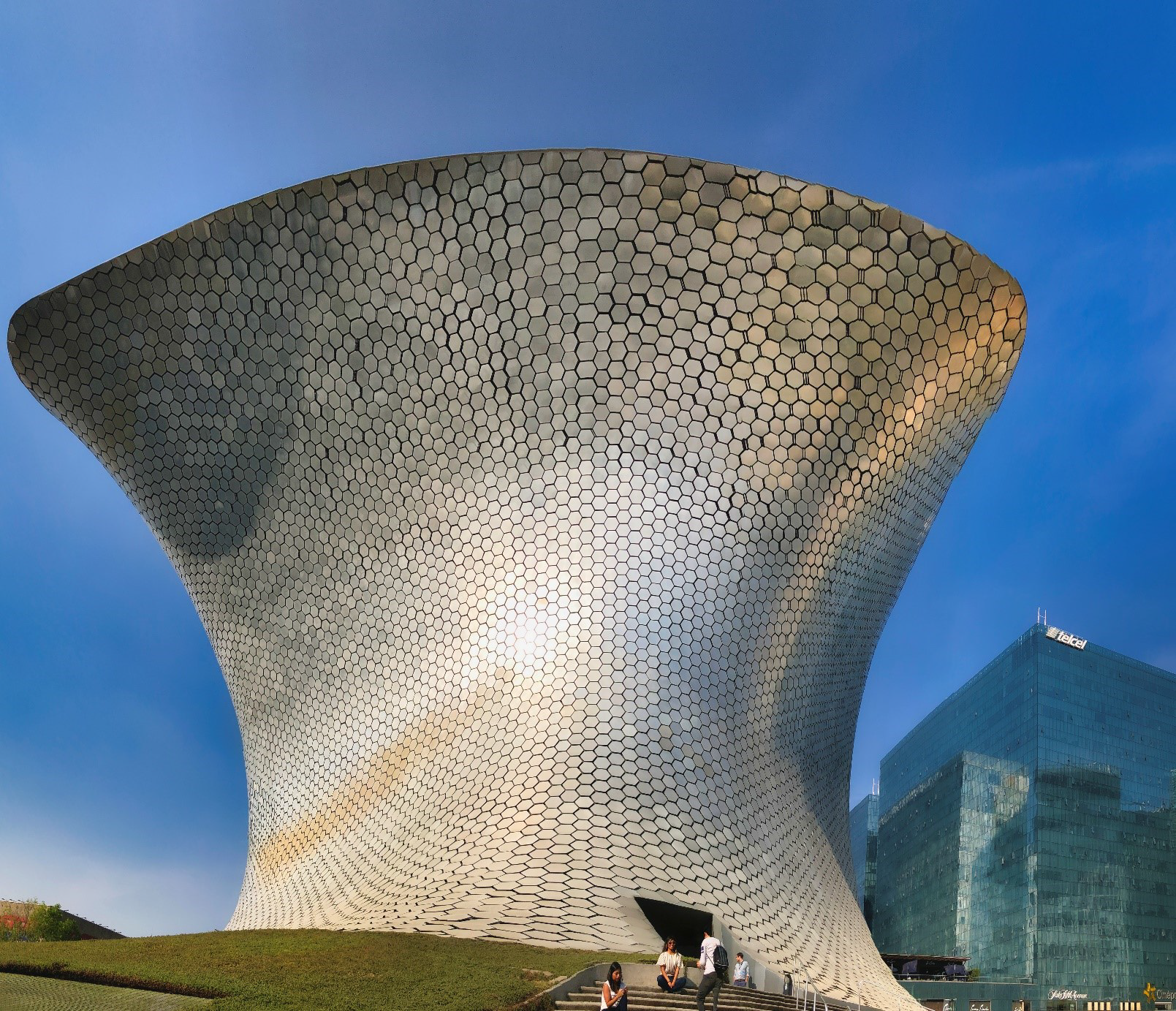
Following a Viet Namese dinner and some interesting conversation with some locals who shared their table with us, we had a restful night at the hotel. The next morning, we boarded a Turibus taking us to the central zone where we would get off and explore the Soumaya Museum.
This is a most unusual piece of architecture, built in an almost funnel shape, and completely finished outside in hexagonal mirrored tiles that present an instantly stunning appearance as they glimmer in the sunlight.
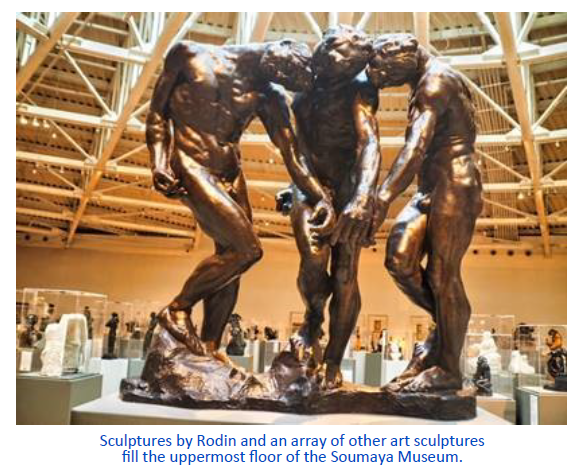
The building rises about six to seven stories with elevators for use or a long winding hallway ascending the building from floor to floor on the periphery of the interior. We were stunned by the artifacts and museum pieces we would behold throughout the museum. The building was constructed by Carlos Slim, owner of Telmex and Telcel fame (and once the richest man in the world), in memory of his wife. What an amazing tribute.
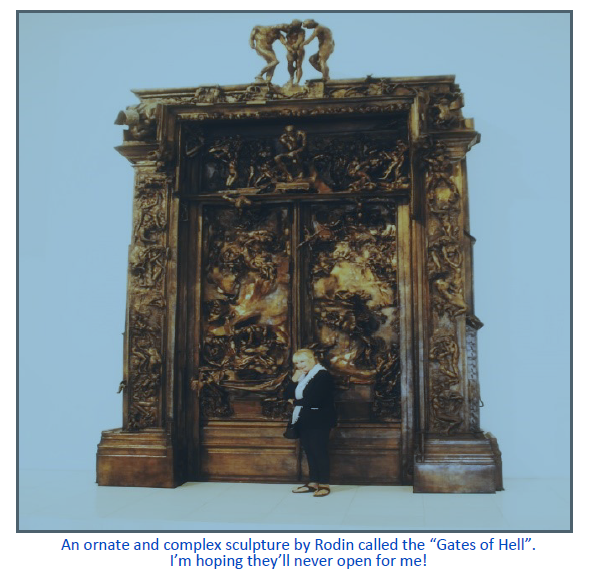
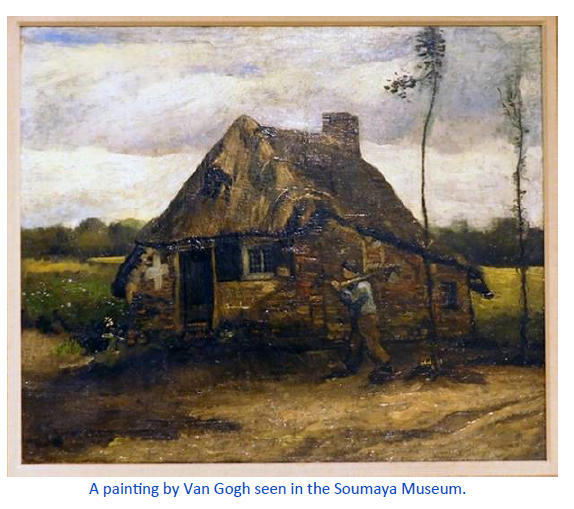
Inside we found ourselves staring at the famous statue, “The Thinker”, by Rodin. At one point, my husband said “I really like this particular painting up on the wall”. A closer look showed us it was an art piece painted by VanGogh!! Beside it, a closer look revealed another painting by Renoir. If you love art, history and ancient artifacts, you may want to put this on your bucket list. Be prepared and allow yourself enough time to really enjoy the amazing contents of this unique museum. It is well worth it.
The next day we boarded the Turibus and continued our bus-top touring through the various areas of the city and out as far as the University. The Mexico University is one of the largest in Latin America, with 324,000 students. Its curriculum focus is in Mineral and Mining Engineering, Arts and Design and Modern Languages. It is the institute of choice by none other than Carlos Slim, seven past presidents and three Nobel prize winners. The campus of UNAM in Mexico City is famous for its architecture. The buildings on the campus are designed by famous architects of the 1950s. the main campus has even been declared a UNESCO World Heritage Site.
And so, as our touring ended and twilight was upon us, we headed back to our hotel with one important stop at the Pho King Restaurant we saw along the way. Am I giving the impression that we are fans of Asian food? You bet! But Mexican food is also a favourite. The next day, we packed up and headed to the airport with our heads filled with cultural saturation and wondering when we might continue exploring the endless delights of Mexico City. There is always more and more!
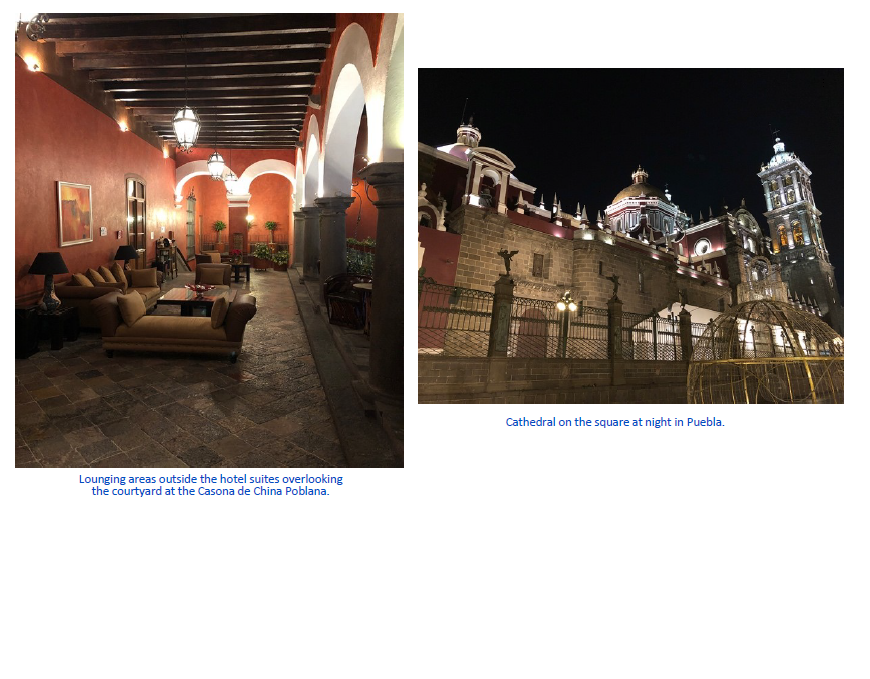
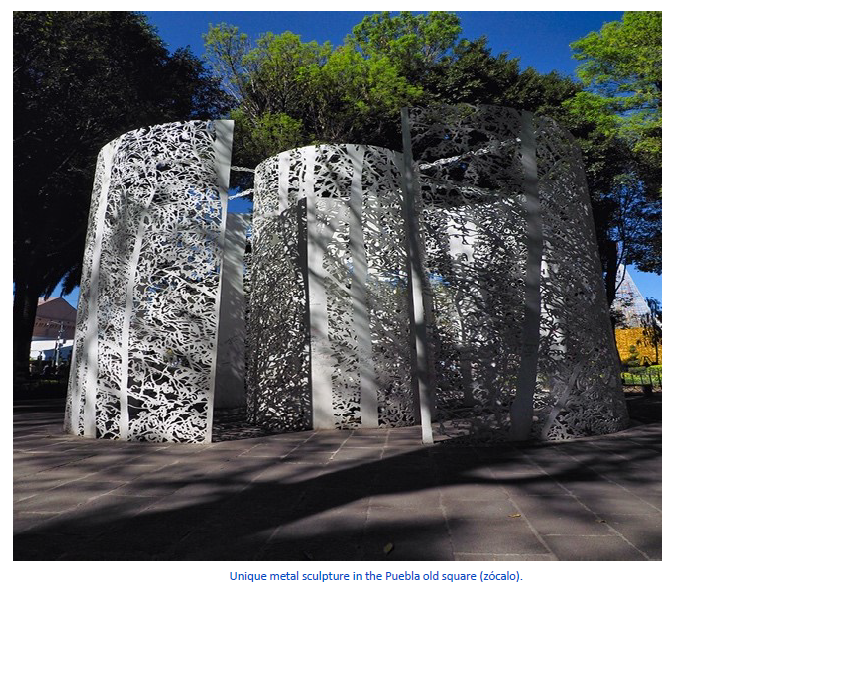
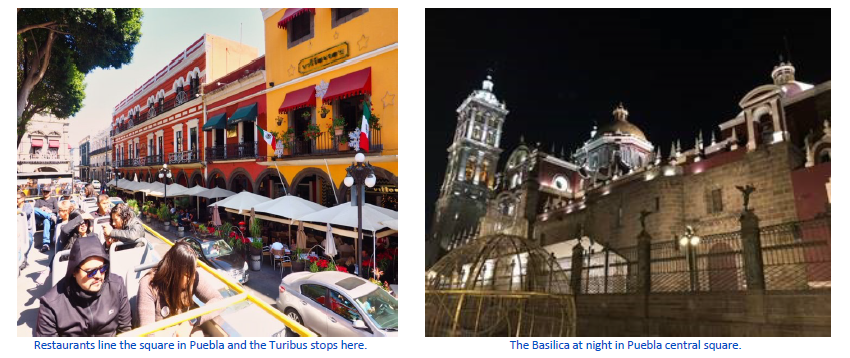
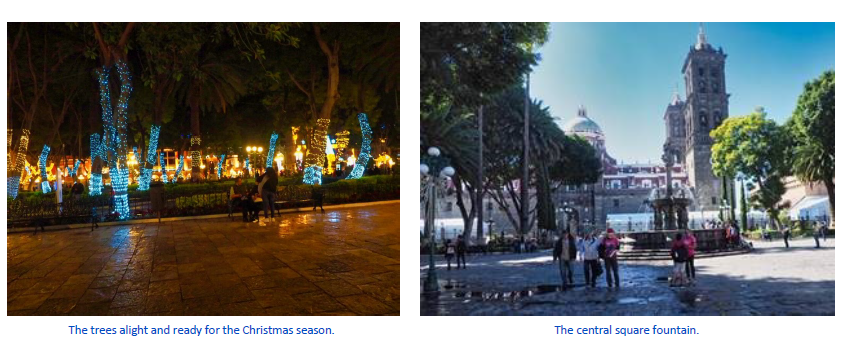
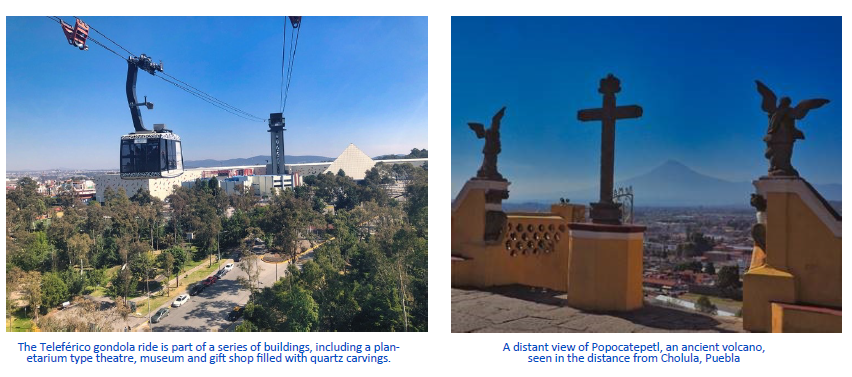
The full edition or view it online
—
Suzanne A. Marshall hails from western Canada and has been living the good life in Manzanillo over the past 8 years. She is a wife, mom and grandma. She is retired from executive business management where her writing skills focused on bureaucratic policy, marketing and business newsletters. Now she shares the fun and joy of writing about everyday life experiences in beautiful Manzanillo, Mexico, the country, its people, the places and the events.

